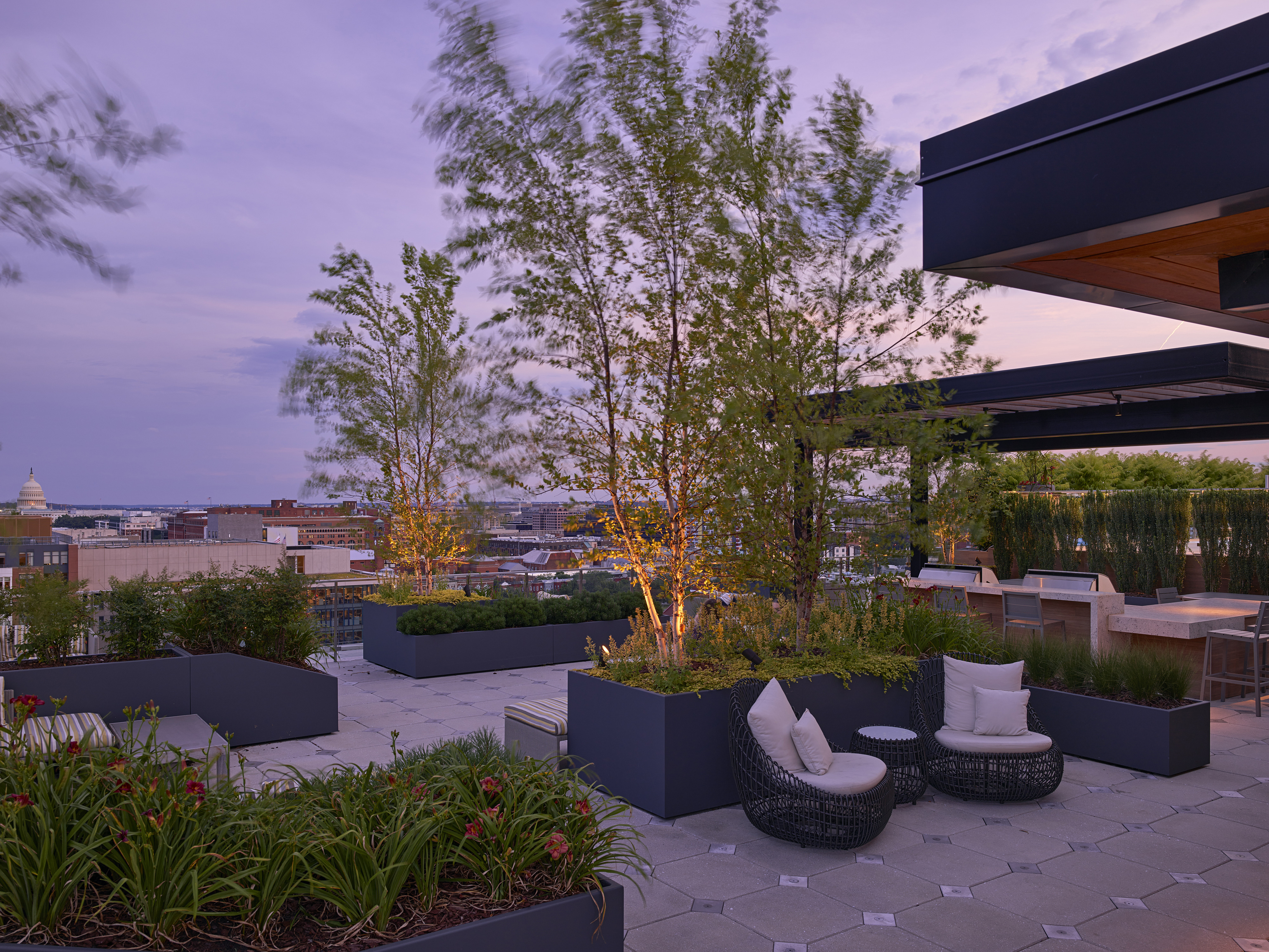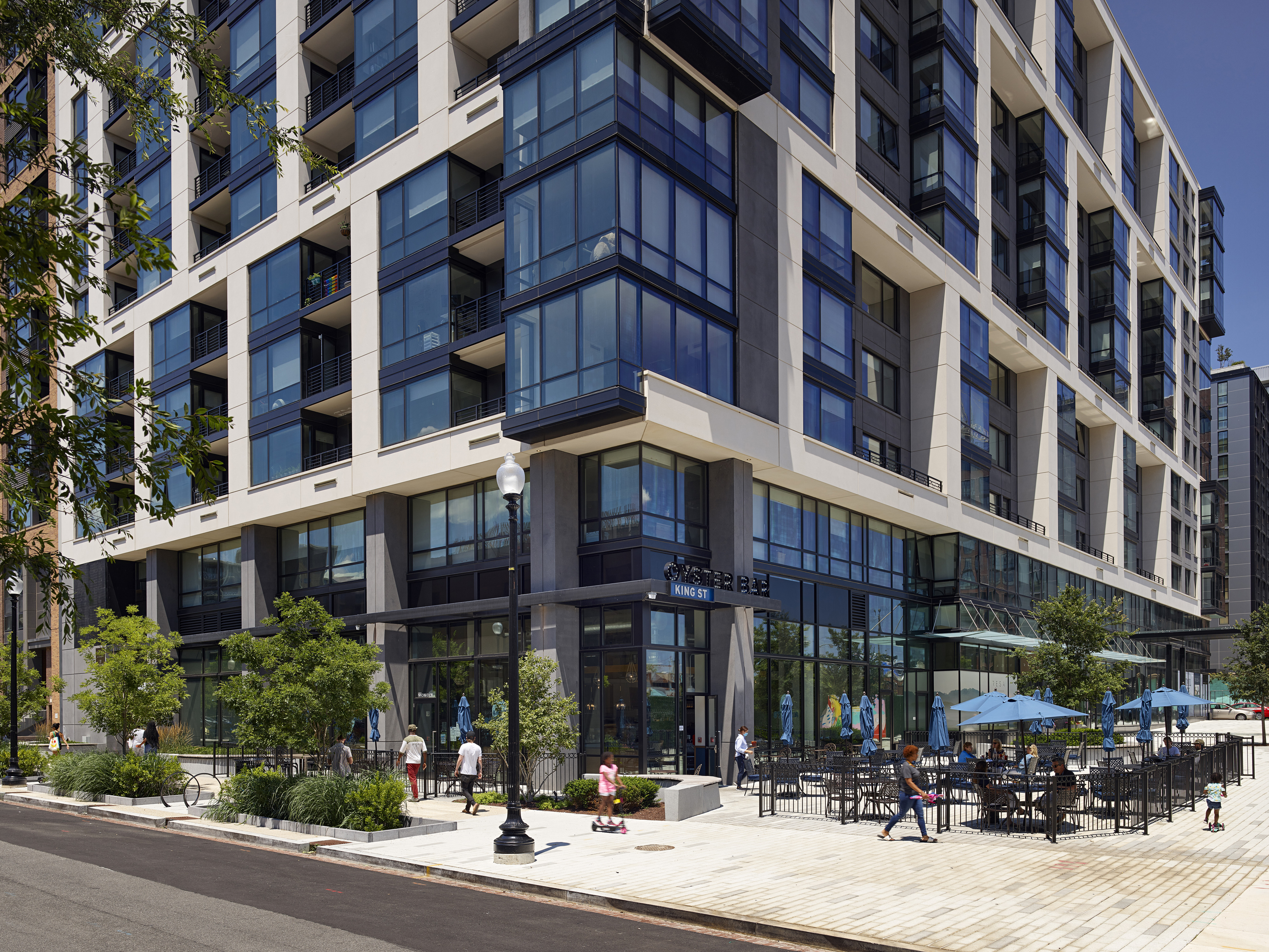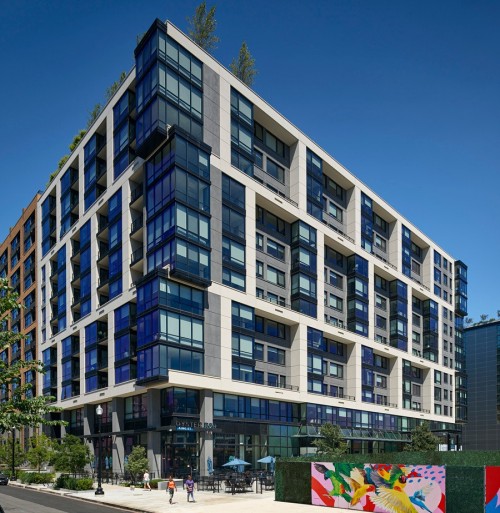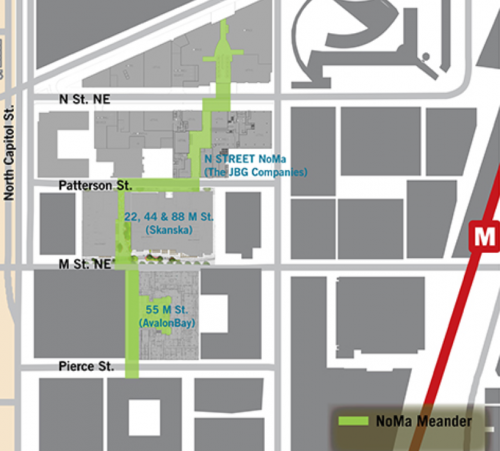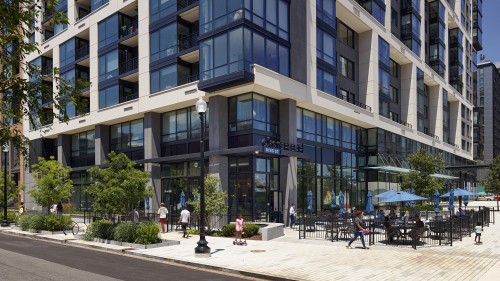
As Skanska’s first residential project in the Mid-Atlantic, the Swedish development company knew they wanted to differentiate Resa from other multifamily projects in Washington, DC by bringing their own organizational values to life. From here, the design and construction team established a set of standards, serving as a guide for the transformative high-rise:
- Care for the lives of people and the environment
- Encourage health and wellbeing
- Encourage green solutions both in the construction and operation of the project
- Be accountable for future generations
These mindsets propelled the pursuit to introduce a sustainable and wellness-oriented community into the NoMa neighborhood, one that would not only achieve LEED Gold but would serve as a catalyst for active lifestyles.
Stormwater
Starting in the earliest stages, a stormwater system eliminating stresses on the existing district infrastructure was integrated into the design. This was achieved through planted roof surfaces at the top level and level 2 terrace, directing stormwater to a cistern in the subterranean parking garage which controlled the flow of stormwater and reused captured water for irrigation of the landscape.
Materials & Sourcing
Resa’s façade consists primarily of locally produced precast panels, designed to reduce energy consumption through short delivery distances and faster delivery times, as well as cutting down the waste of field assembled materials. Manufacturing 34% of materials within 500 miles of the site supports the regional economy and positively contributes to the design team’s sustainability mission. In the interior, a similar approach was taken with the wood screening elements used to highlight the amenity space on the ground floor and roof. Careful construction practices resulted in an incredible 87% of waste diverted from landfills.
The Meander
The most visible element of the project meant to build community within the surrounding neighborhood is the Meander, which creates new public space populated with vegetation, shade, and seating opportunities while breaking up the extremely long superblock with a pedestrian passage moving north and south through the site. The Meander also serves as the primary means of providing access to air and light for the building’s residents. Through the extrusion of living spaces along the corners of the meander, views beyond the constraints of the street wall were expanded to create further connection to more distant parts of the city.
Connection to Environment
Despite Resa’s urban setting, the high-density location is utilized to draw residents outdoors, while taking advantage of sustainable practices. The building’s proximity to public transportation presents an easy alternative to driving, allowing for a reduced capacity car garage to minimize carbon emissions. On the ground level, ample bike storage is available beside extensive fitness amenities to promote active lifestyles. 35% of the site is outdoor open space for occupants, consisting of thoughtful landscape elements to strengthen ties between community and nature. Native and adaptive plants account for 20% of the site to support effective irrigation and reduce water use by over 60%. From the interior, 90% of spaces have direct views to the outdoors, creating a more enjoyable environment and decreasing the need for electric lighting.
